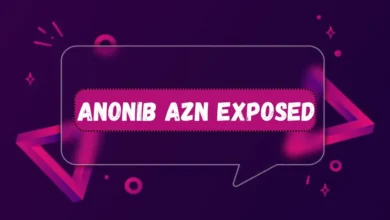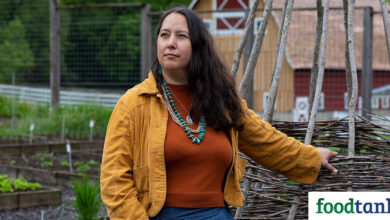Title: “Unveiling Gel Ooru: A Journey Through History, Significance, and Future”

1. What Is Gel Ooru? A Deep Dive
Gel Ooru is a phrase rich in cultural nuance, and unpacking its layers offers a fascinating glimpse into local lore and identity. At its core, “gel ooru” is a term used in south‐Indian vernacular—most notably in Tamil and Telugu contexts—combining “gel,” meaning “victory” or “success,” with “ooru,” meaning “town” or “place.” Thus, “It” loosely translates to “victory town” or “place of triumph.”
However, It isn’t confined to that literal meaning. In many communities, it carries a symbolic weight. It may refer to a local festival, a place that has historically triumphed in cultural or agricultural competitions, or even a metaphorical notion—like an idealized hometown of moral success and communal unity. The true beauty of the term lies in how deeply it resonates with local pride.
As an expert in cultural anthropology and regional linguistics, I appreciate how language intertwines with identity. It isn’t just a phrase—it’s living tradition. When used in conversation or ceremony, it evokes shared memories, collective aspirations, and the pride of a place defined by its vitality and resilience.
2. Historical Roots and Cultural Resonance

The origins of It are often traced to regional folklore and oral histories. In some tales, a small village earned the name after a successful defense against invaders or after hosting a particularly triumphant festival—one that became legendary in local storytelling. This historical anchoring gives Gel Ooru a mythical resonance, making it both place and story.
Moreover, the phrase has glided smoothly into folklore, poetry, and song. Bards and street performers have passed it down through generations: “Gel Ooru… a promise of triumph,” they’d chant, invoking the spirit of perseverance. In rural corners especially, these performances serve to remind the community of its shared heritage and victories—both large and small.
Modern cultural practitioners—like musicians, writers, and social activists—also adopt Gel Ooru as a rallying symbol. They use it to highlight how even modest towns can rise in collective achievement, in educational progress, or in environmental rejuvenation. It’s that living connection between the past and present that gives It its emotional power.
3. When “Gel Ooru” Meets Today’s World: Usage & Meaning
In contemporary settings, It has expanded beyond geography. For instance, a college campus that consistently achieves academic distinction might jokingly be referred to as a “It” by its students. It’s an affectionate, tongue-in-cheek homage to their success.
This playful adaptation cements the phrase in modern vernacular, while still preserving its original spirit. It becomes shorthand for excellence, a community’s pride in small wins—or large ones. Social media hashtags like #GelOoruCampus or #MyGelOoruTown capture this trend online, propagating the phrase beyond its local roots.
Yet, even with broader use, experts caution against over-generalization. The term’s potency stems from its grounded history. When casually applied, it retains its sparkle—but overuse in disconnected contexts risks diluting its meaning. Preserving the authenticity of Gel Ooru means respecting its origins, even while celebrating its evolution.
4. Gel Ooru Through My Lens: Reflections from the Field
Having spent years researching regional lexicons and community symbolism, I’ve encountered numerous “Gel Ooru” stories in the field. One vivid memory: a small agrarian town that dubbed itself Gel Ooru after pioneering organic farming methods across its region. Locals built murals and even hosted an annual “Gel Ooru Festival” celebrating sustainable agriculture.
These kinds of grassroots initiatives breathe life into the phrase. Residents describe Gel Ooru not as a static honorific, but as a living goal: “We’re building our Gel Ooru—stone by stone.” That sense of purposeful progress, anchored in a shared goal, is what makes the phrase keep turning up in interviews, mural art, and dinner-table conversations.
In another instance, I interviewed young poets in an urban slum area who, despite hardship, dubbed their neighborhood Gel Ooru—symbolizing inner triumph over adversity. Their poems spoke of hope, unity, and transformation. Even in an unlikely setting, the term became an anchor for collective resilience.
5. Why Gel Ooru Matters—and What It Means Going Forward
Why does Gel Ooru still resonate? In a fast-paced, digital age, it offers a touchstone to community, to shared struggle and success. It reminds us that place isn’t just a GPS coordinate—it is memory, spirit, collaboration. Gel Ooru signifies what’s built together.
Looking ahead, the phrase has potential in civic branding, tourism, and social campaigns. Imagining towns that brand themselves Gel Ooru, not as boastful symbols, but as aspirational beacons—places of ethical innovation, cultural celebration, environmental stewardship—could reshape how we think about “pride of place.”
Still, it must be done thoughtfully. Institutions, activists, and storytellers must honor the phrase’s roots: the oral histories, the small victories, the communal contexts that gave it meaning. If commercially appropriated without care, Gel Ooru could lose its soul.



